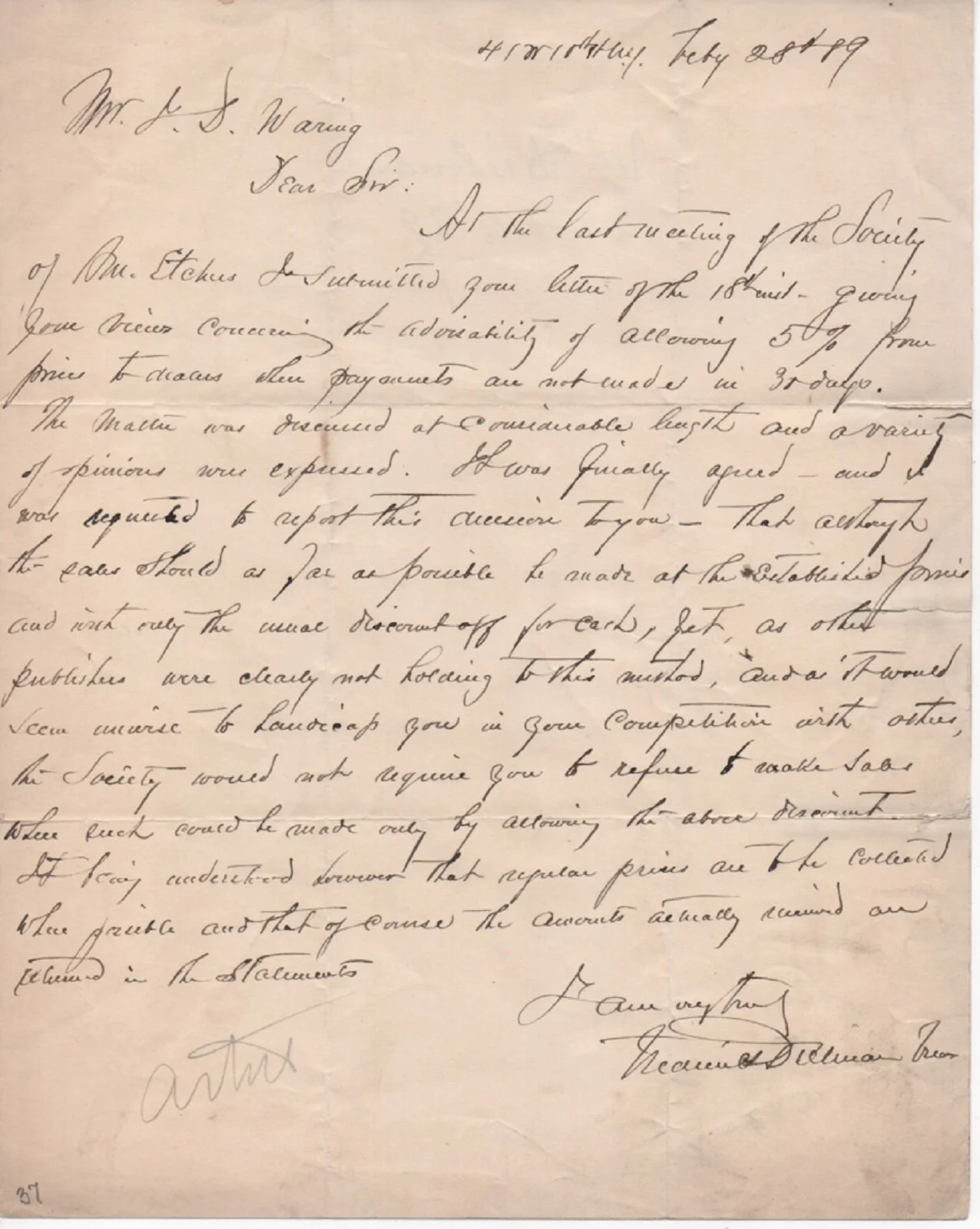
Dielman, Frederick Artist, negotiates prices for his prints
Frederick Dielman – German American illustrator and painter (1847-1935). ALS, one page 8 x 10, New York as the Treasurer of the Society of American Etchers. He writes to the publisher J. D. Waring discussing acceptable discount pricing for prints that were not paid for in a timely manner. Dielman’s letter suggests publishers frequently faced the problem of artists being slow to pay for their orders of bulk prints. The printer would attempt to recoup cost by selling them directly at a discounted price. It appears the Society tried to shore up the market for all by encouraging an informal floor on how low the discounts could go to prevent dumping and depressing the market for other artists. While it is not true that all artists starve it seems many were hard-pressed to pay their printing bills.
Dielman was a versatile artist producing illustrations for many books as well as some of the murals and large mosaic panels in the Library of Congress. An interesting letter offering some insight into the commercial world of etching in the late 1880’s.
Frederick Dielman – German American illustrator and painter (1847-1935). ALS, one page 8 x 10, New York as the Treasurer of the Society of American Etchers. He writes to the publisher J. D. Waring discussing acceptable discount pricing for prints that were not paid for in a timely manner. Dielman’s letter suggests publishers frequently faced the problem of artists being slow to pay for their orders of bulk prints. The printer would attempt to recoup cost by selling them directly at a discounted price. It appears the Society tried to shore up the market for all by encouraging an informal floor on how low the discounts could go to prevent dumping and depressing the market for other artists. While it is not true that all artists starve it seems many were hard-pressed to pay their printing bills.
Dielman was a versatile artist producing illustrations for many books as well as some of the murals and large mosaic panels in the Library of Congress. An interesting letter offering some insight into the commercial world of etching in the late 1880’s.
